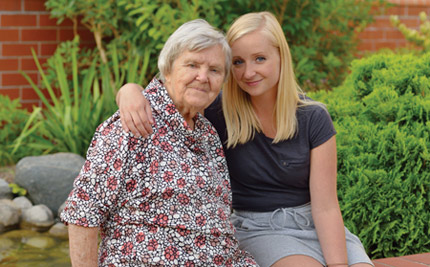Simple exercises to keep Older Adults Moving – Part 1
by John C. Griffin, MSc.
Have you ever had trouble getting in or out of a car? Are recreational activities that involve agility or balance getting harder? Do you find that carrying groceries is becoming more of a challenge?
These are some tasks that require functional mobility — the ability to efficiently perform the necessary activities of daily life without undue fatigue or pain. With good functional mobility, you can have a good quality of life and stay healthy, safe, and active.
In this series of articles, we’ll have you try several ‘screening tests’. These will help you spot problems with functional mobility. In each article, we will target a specific area of mobility. For each area, we’ll give you a simple exercise to improve that aspect of your functional mobility.
The first area to consider is that of ‘up and down’ activities with a lower body focus. This includes things like getting in and out of a car, moving quickly up and down stairs, or putting on socks.

Test #1: Chair Sit-and-Reach
How to do it:
- Sit up straight on the front edge of a chair.
- Put one foot flat on the floor with the knee bent.
- Put the other leg straight out in front, with the heel on the floor and toes pointed up.
- Stretch your arms out in front of you, with one hand on top of the other, so that the middle fingers match up.
- Bending at the hips, reach your hands towards or past your toes as you exhale. Keep the knee of your outstretched leg straight.
- Hold the stretch for 2 seconds.
- After you have practiced this with each leg, give yourself a score.
How did you do?
Score 2 points if you can reach past your toes.
Score 1 point if you can touch your toes.
Score a 0 if you are not able to touch your toes or you have pain while doing the test.
Score the test: Left ___ Right ___
Stretch 1

Stretch 2

An exercise to improve lower-body mobility
If you scored a “0” or “1”, the following stretch will improve the flexibility of your back, hamstrings, and calves. You will need a scarf. Do this exercise once a day, three times on each side.
- Loop the scarf around the arch of your right foot with a full circle.
- Lie on your back with your knees bent and feet on the floor.
- Bend your right knee and pull on the scarf to bring your right thigh in close to your chest. Hold for 10 seconds.
- Keeping the upper thigh in position, extend the knee as far as far as you comfortably can. Gently pull with the scarf to assist the stretch. Hold for 10-15 seconds.
- For an added stretch to the calf, pull your toes up toward your shin.
- Repeat these steps on the left side. Do each side 3 times once a day.
About the Author:
John C. Griffin, MSc., was a professor in the Fitness and Lifestyle Management Program at George Brown College in Toronto for 37 years. As a private consultant, speaker, coach, and writer for public and private sector organizations, John has authored more than 60 publications, numerous manuals, and a textbook published by Human Kinetics, Client-Centered Exercise Prescription. Right now John is doing research on the functional mobility of adults 50-70 years of age.
Click Here for print PDF file – Active Living Simple Exercise 1
Alzheimer’s and women
The 72%
Did you know that women make up 72% of Canadians living with Alzheimer’s disease? They are our mothers, wives, sisters, grandmothers, friends – even us.
Women live longer than men and age is a big risk factor. That’s why there are more women living with Alzheimer’s disease than men.
Women also account for 70% of family caregivers. Caregiving takes a tremendous toll on women, many of whom provide round-the-clock care. The burden is especially high for women raising families and holding down jobs.
Reduce your risk
A healthy lifestyle can help reduce the risk of Alzheimer’s disease and other dementias. Experts estimate that up to half the cases of Alzheimer’s disease worldwide may be the result of risk factors that we can address by making changes in our lives.
8 things you can do to improve your brain health
- Be physically active.
- Avoid smoking and drinking too much alcohol.
- Track your numbers: blood pressure, cholesterol, blood sugar and weight. Keep these numbers within recommended ranges.
- Stay connected socially. Be around people regularly.
- Make healthy food choices. Eat a well-balanced, healthy diet rich in cereals, fish, legumes (peas, beans and lentils), and lots of vegetables.
- Reduce your stress.
- Challenge your brain by trying new things, such playing games or learning a new language.
- If you are active in sports or cycling, protect your head by wearing a helmet.

Watch for the 10 warning signs
Warning signs are often misunderstood or ignored, but you should watch for them because early diagnosis is critical. See a slide show of the 10 warning signs here.
Don’t face this disease alone
The Alzheimer Society is the leading nationwide health charity for people living with Alzheimer’s disease and other dementias. Alzheimer Societies across Canada provide support throughout this disease. They make it possible for you, or someone you care about, to live as well as possible. Visit www.alzheimer.ca.
Adapted with permission from the Alzheimer Society of Canada.
Click Here for print PDF file – Women’s Health Alzheimers and women

- Categories
Recent Posts

